The act of writing is undergoing a profound transformation that marries the artistry of human expression with the precision of technology. As this revolution takes place, writers may feel lost or overwhelmed by this new technology–should we use it? Should we not? How can we use it correctly? Understanding how these tools work and employing them appropriately can enhance our capabilities as writers.

Embracing AI in Writing
Integrating large language models (LLMs) and artificial intelligence (AI) into the writing process is no longer a futuristic concept; it’s a practical reality. Platforms like Grammarly and ChatGPT have revolutionized how we approach writing, from the first draft to the final polish. These tools are designed to assist emerging writers and professional authors alike, offering a spectrum of functionalities that range from grammar correction to style enhancement.
As we harness these advanced tools, we should strive for balance. Technology is an extension of our creativity, not a replacement. Adopting AI in writing should feel empowering, like finding a writing mentor who guides but never overrules your authorial voice.
Keeping the Human Element
Technology offers consistency and efficiency but can lack the genuine warmth and understanding that human touch brings to storytelling. This is where writers must dig deep and bring empathy, warmth, and personal connection into the narrative. Stories resonate most when they reflect genuine human experiences and emotions. Further, LLMs are not a substitute for human thought–these platforms cannot independently know the intimate memories of a memoirist or intuit which personal stories will generate the most emotional impact. But that doesn’t mean a writer has to simply rely on memory to get their story on paper; DIYBook offers hundreds of prompts to help writers dig deep and find those stories they want to tell.
Here’s how that would work:
- The writer selects a life story prompt from DIYBook, For this example, let’s say the writer selects a prompt that focuses on a key childhood memory, such as the first day of school.
- The writer reflects on this memory and the emotions tied to it, considering the details that made the experience significant.
- Next, the writer can utilize an LLM, like ChatGPT, to expand on the memory, adding descriptive language and sensory details.
- Editing! Editing! Editing! The writer revises and polishes the narrative until it’s just right.
- The writer can then cut-and-paste their LLM-generated story into their secure writing platform with DIYBook.
- By combining the personal reflection prompted by DIYBook with the creative expansion enabled by the LLM, the writer transforms a simple memory into a vivid and engaging part of their life story.
Cost-Effective Solutions for Aspiring Writers
For many aspiring writers, the cost of traditional publishing and editorial services can be a steep barrier. AI-driven tools democratize access to quality writing assistance. However, it’s important to approach these tools critically—evaluate their benefits and acknowledge their limitations. The goal is to always retain the author’s unique voice and perspective.
Which LLM Is Best?
All LLMs are not created equal; some are prone to hallucinations and lying, and how their parent companies trained these platforms is the subject of several lawsuits. What LLM is the most helpful to us writers? There’s no one answer, and these platforms evolve regularly. To that end, we here at DIYBook have started reviewing the various platforms to help writers make the most informed decision possible when deciding which LLM to incorporate into their writing. We’re also preparing a series of prompts writers can use with their LLM that will increase writing efficiency and help combat writer’s block.
Here are our reviews so far:
Is Grammarly Good For Writing A Book? Secrets From a Professional Ghostwriter
ChatGPT Can’t Write Your Book, But It May Be Able To Help
Keep checking back for new reviews.
Conclusion: A Balanced Approach
As we move forward, let us enthusiastically and cautiously embrace the technological advancements in writing. By blending the efficiency of AI with human-derived insights, we can navigate this new landscape with our authenticity intact. Technology can be our ally in the quest to tell well-crafted stories.
The goal is not to replace writers but to empower them, allowing each of us to share our stories with the world in the most profound and engaging way possible. Let’s use these tools to lift our narratives to new heights without losing sight of the personal touch that defines our humanity.
Let’s embark on this journey of innovation by embracing the science and art of writing to explore and express our shared human experience in ways we never thought possible.





